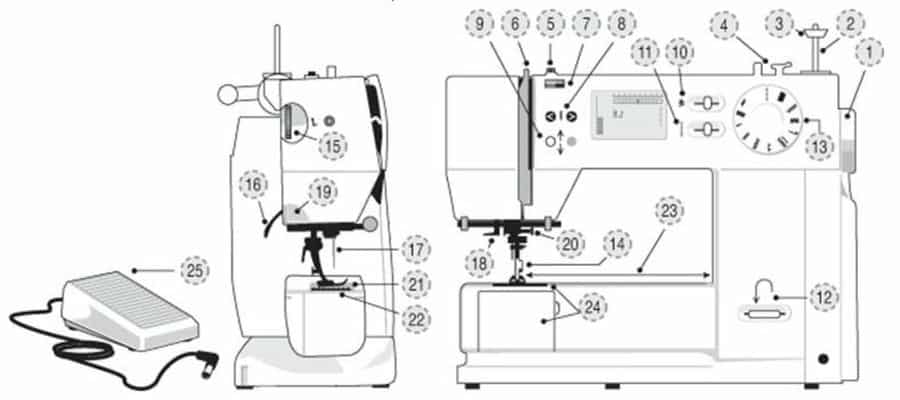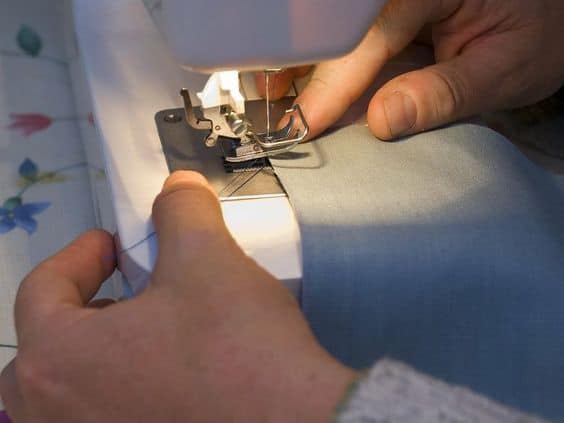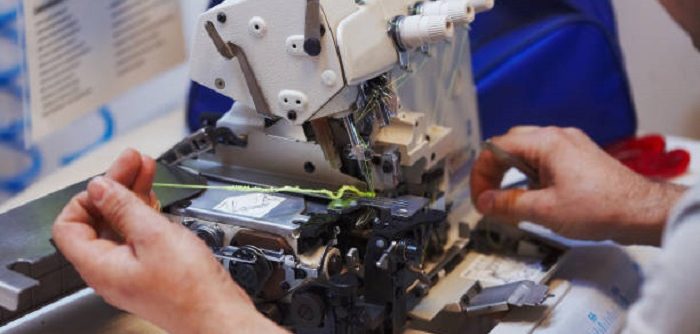If there is one thing we can all agree on, it is that. The sewing machines are one of the best inventions that have been made in the history of mankind. Thanks to them, the work of thread and needle has not only been simplified. Now, it can be done in much more efficient and resistant ways. Let’s discover how to repair sewing machine?
In addition, make any own design on a sewing machine inside the house. It is something that brings a lot of satisfaction to anyone, besides that it can mean an important inflow of money. So much so. We always recommend people try to make a profit through their sewing designs; nothing like managing your own portfolio of clients and that they love your work.
How to repair sewing machine?
The first step before starting to disassemble and move parts or screws is: Know the name and location of those pieces and parts that you are going to move.

Although this is a very generalized look at the main parts of a sewing machine; It is necessary that you familiarize yourself with them. We name them; we show you where they are usually located. You look for them in your machine, learn to know and understand what makes it work.
1. Steering wheel: You should always turn it towards you to adjust the height hand.
2. Reel pin: It can be vertical or horizontal, it keeps the reel in position while the thread passes to the machine.
3. Reel cover: It also fulfills the function of holding the spool of thread.
4. Winder: Built for reel spools. Newer models do not own it.
5. Thread guide: It takes care that the thread does not get tangled. It can vary its shape according to the model; it is usually seen in the form of discs or rings.
6. Pickup lever: This piece is the one that moves up and down.
7. Tension regulator: In the new models are usually adjusted through a control on the front of sewing machines.
8. Needle position: Thanks to this piece, we can achieve different types of stitching and stitching.
9. Needle stop or up / down: Thanks to this function, you can save time in curves while you sew.
10. Stitch width adjustment: With this function, you can create different patterns.
11. The stitch length adjustment: You can sew stitches that use more or less thread.
12. Reverse / Reverse: Either a button or an older mechanism; All machines allow sewing in reverse.
13. Stitch selector: Ideal to vary according to the type of fabric and finish that we want.
14. Fabric press: To move the fabric evenly when sewing.
15. Pressure control of the press fabrics: You should vary the amount of pressure according to the type of fabric.
16. Foot lever of the press fabrics
17. Needle
18. Threader
19. Thread cutter
20. Needle clamping screw: Tighten or loosen to secure or release the needle.
21. Stitch plate: Ideal for aligning the fabric when sewing; Most can be disassembled, and you should do it from time to time.
22. Lower bobbin: The length of the stitch depends on the amount of fabric moving on the driving teeth.
23. Throat: It is that open space between the casing and the needle.
24. Coil cover
25. Foot control: To regulate the speed of the machine.
We will tell you what you must do to solve it yourself in record time.
Thread stuck in the tap
This is undoubtedly the most common and always occurring inconvenience. Who does not know what it is to deal with a thread stuck in the lower bobbin does not know what it is to sew on a machine?
The thread is rolled for many reasons, is something that you can not practically avoid; but it is good to recognize the possible reasons, so it will be easier to find the right solution.

The thread is of poor quality
That’s right. It’s not the machine; it’s not you. It is the thread that you have placed in the machine. If you bought some reels that caught your attention because of their colors, the quantity and; especially for the price.
This type of thread is not usually of the right quality. For that reason, they are sold in those bargains. It is not the machine that is failing. The thread will continue to break and jam because it is of poor quality; stop using it.
Tags: How to repair, sewing machine




Leave a Reply
You must be logged in to post a comment.